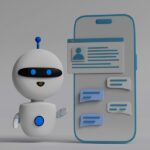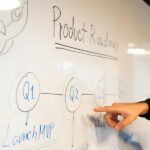By: Excelkits
Picture this: You’re a small business owner sitting on a pile of insightful data, yet every attempt to make sense of it feels like deciphering a foreign language. You’re not alone. Data is everywhere, but the tools to visualize it effectively have long been locked behind technical barriers—until now. Enter the no-code movement, tearing down those walls and empowering creators, businesses, and storytellers. At the forefront of this shift are platforms like Excelkits, transforming how we approach data visualization.
A Democratization of Data Visualization
For years, data visualization was the domain of experts like data scientists, graphic designers, and coders. You were left in the dust if you didn’t know how to write scripts or navigate complex software. The no-code movement changes this dynamic entirely. No-code tools allow users to bypass technical hurdles and focus on creativity and communication.
This isn’t just a trend; it’s a paradigm shift. Now, anyone with a dataset and a story to tell can create stunning, interactive visualizations without writing a single line of code. The result? A world where businesses, bloggers, educators, and entrepreneurs have equal access to the power of data storytelling.
Why No-Code Matters
Let’s face it—data is intimidating. Spreadsheets, rows of numbers, and complex formulas can overwhelm even seasoned professionals. No-code tools simplify the process, turning raw data into engaging visuals. Whether it’s a line graph showing quarterly growth or a heat map revealing customer behavior, these tools make it easier to communicate insights that matter.
But the real power of no-code lies in its inclusivity. You don’t need to hire a data scientist or learn Python to create professional-grade visuals. Instead, you can use intuitive interfaces and drag-and-drop functionality to bring your data to life. This accessibility saves time and resources and empowers more people to take ownership of their data.
The Role of Storytelling in Data Visualization
Data alone is meaningless without context. The rise of no-code tools coincides with an increasing recognition of the importance of storytelling. A well-crafted chart or graph isn’t just visually appealing—it’s a narrative, guiding the audience through complex information intuitively.
Take, for example, a journalist explaining climate change trends or a marketer showcasing customer engagement metrics. With the right tools, they can create visuals that inform and resonate. Storytelling turns data into experiences; no-code platforms allow everyone to craft those experiences with finesse.
From Small Businesses to Global Enterprises
The no-code movement isn’t just for hobbyists or small-scale projects. Large enterprises also embrace these tools to streamline workflows and empower their teams. Imagine a marketing manager using a no-code chart maker to create a campaign report in minutes or a product team visualizing user feedback in real time. The applications are endless.
The impact is even more profound for small businesses. No-code tools level the playing field, enabling smaller teams to compete with larger organizations. Platforms like Excelkits allow users to build sophisticated visualizations quickly without the need for expensive software or specialized skills. This democratization of technology gives businesses of all sizes a fighting chance to stand out in a crowded marketplace.
Bridging the Gap Between Insight and Action
One of the most exciting aspects of no-code data visualization is its ability to drive action. Clear visuals help decision-makers identify patterns, spot opportunities, and make informed choices faster. For instance, a nonprofit tracking donation trends can use interactive graphs to pinpoint effective fundraising strategies. Similarly, educators analyzing student performance data can identify gaps and tailor their teaching methods.
The key here is immediacy. No-code tools shorten the distance between insight and action by eliminating the need for technical expertise. This agility is crucial in a world where real-time decisions can differentiate between success and failure.
What’s Next for No-Code and Data Visualization?
The no-code movement is poised to grow even more powerful as technology evolves. Artificial intelligence and machine learning are beginning to integrate with no-code platforms, offering users advanced capabilities like predictive analytics and automated insights. Imagine a tool that visualizes your data and anticipates future trends or highlights anomalies you might have missed.
Moreover, collaboration features are becoming a cornerstone of no-code tools. Teams can now work together on visualizations in real-time, breaking down silos and fostering a culture of shared knowledge. This shift towards collective intelligence will only accelerate the adoption of no-code solutions across industries.
The Future is Accessible
The no-code movement is more than a technological innovation—it’s a cultural shift towards inclusivity and empowerment. By removing technical barriers, these tools make it possible for anyone to harness the power of data. The possibilities are endless, from authors crafting compelling narratives to businesses making data-driven decisions.
Excelkits embodies this vision, providing tools that empower creators to transform raw data into meaningful experiences. The future of data visualization is here, and it’s more accessible than ever. The question isn’t whether you’ll join the no-code revolution. It’s how you’ll use it to tell your story.
Published by: Holy Minoza

















